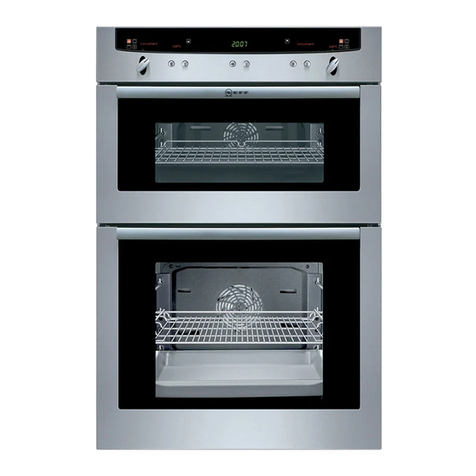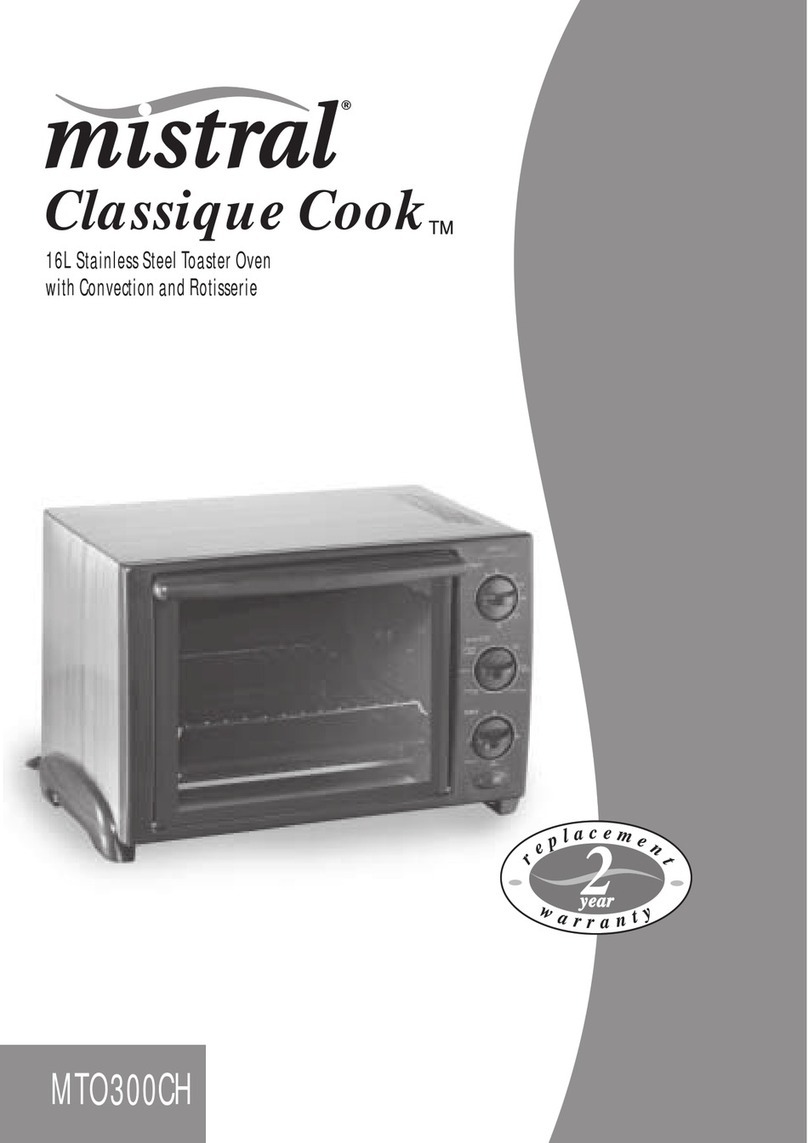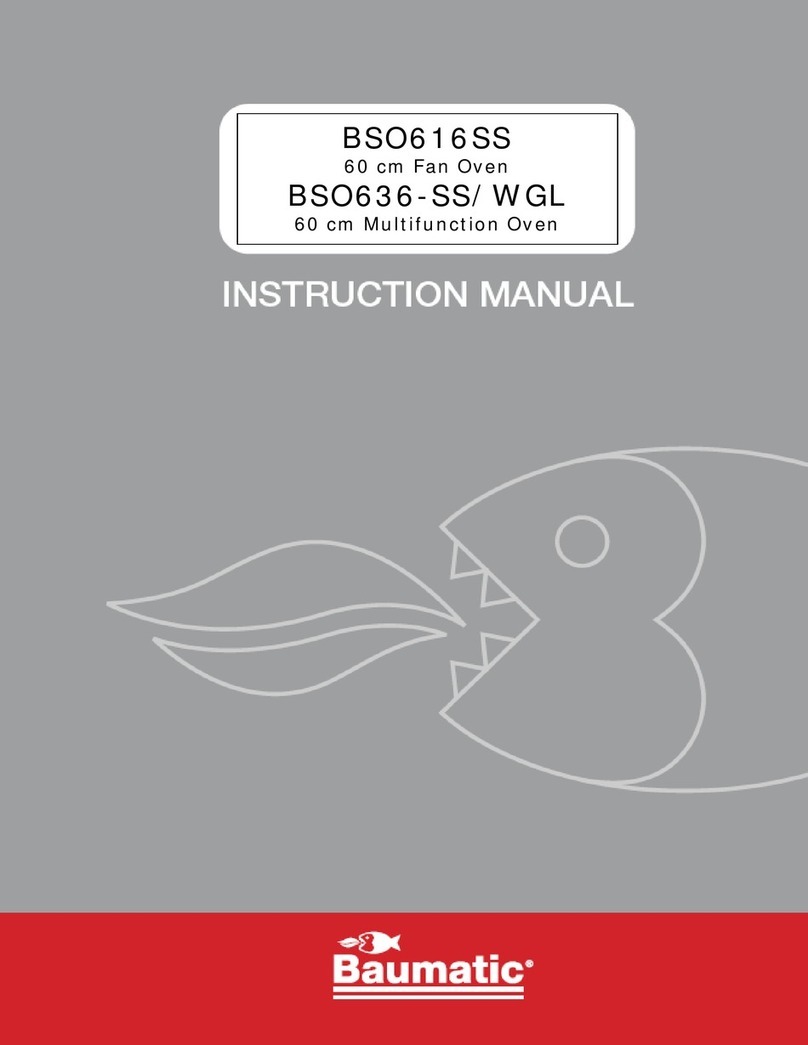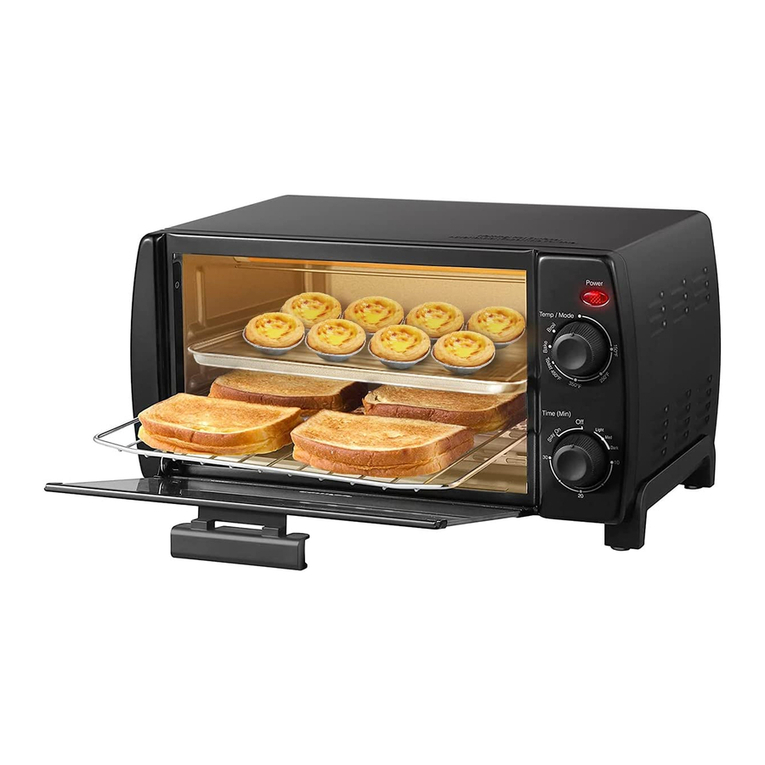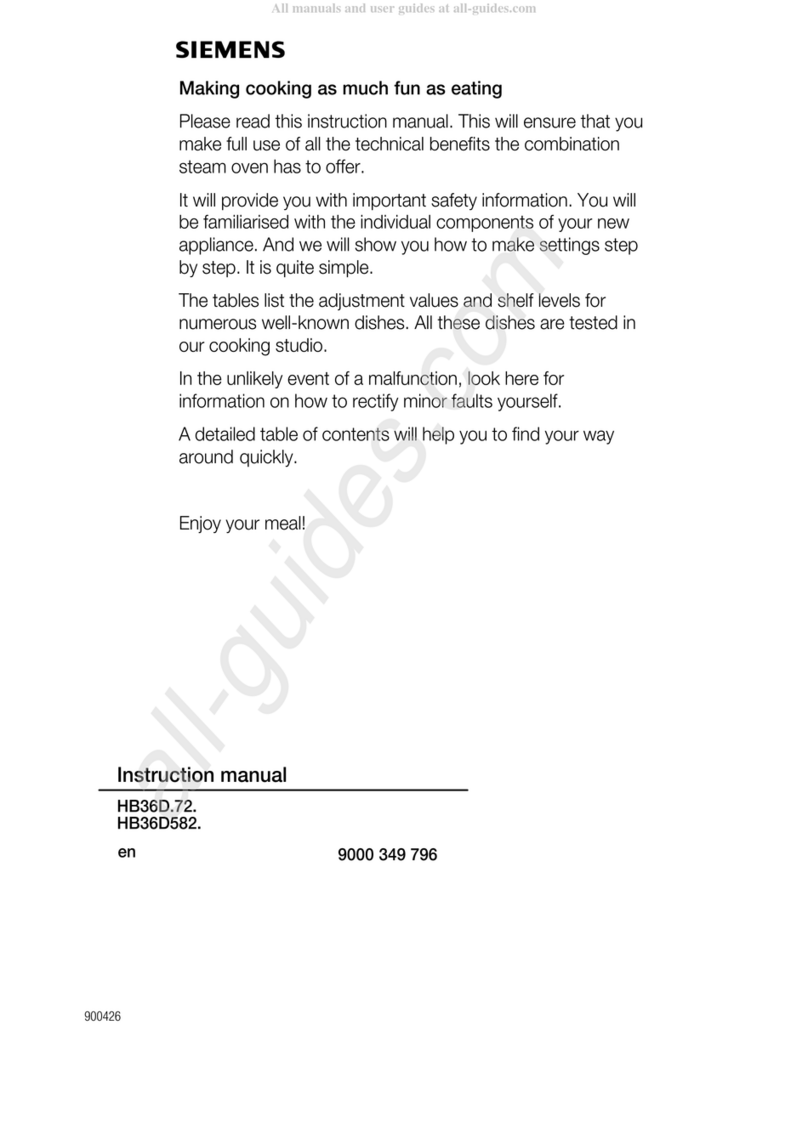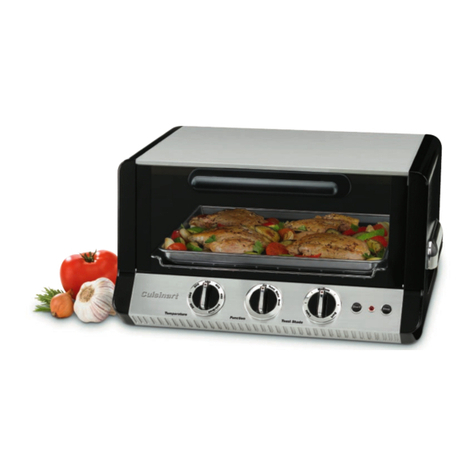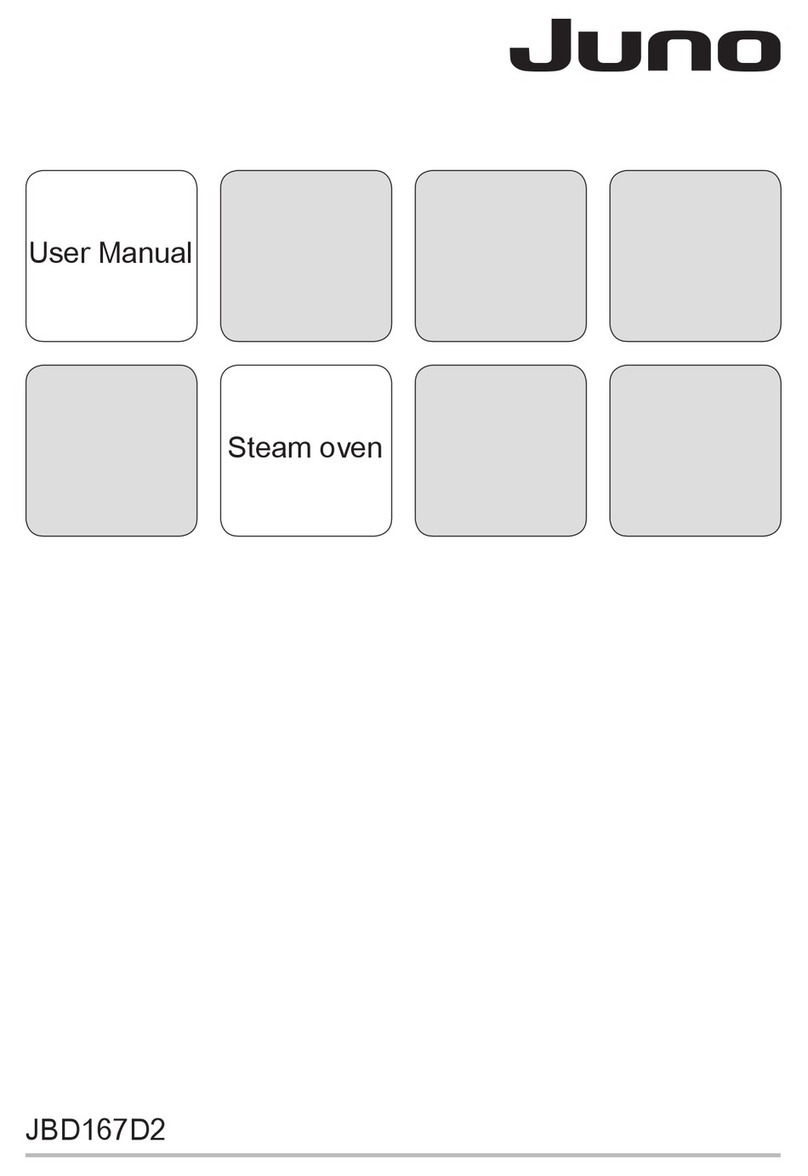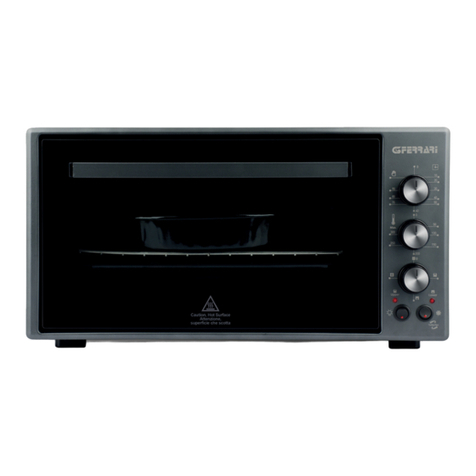StoneAge Vecchio Pizza Oven SA VPO-34 User manual

1
Installation and Operation Instructions
Stone Age Brick and Vecchio™ Pizza Ovens
1.0 Introduction
The following provides instructions for the instal-
lation, operation and care of Stone Age Brick and
Vecchio™ Pizza Ovens, manufactured by Stone
Age Manufacturing, Collinsville, Oklahoma.
Three generations of wood-burning oven
knowledge and experience have gone into the de-
sign, construction and use of these pizza ovens. A
completed Vecchio oven, finished in rock, is shown
in Figure 1.
Figure 1. Vecchio™ Pizza Oven
The only differences between the Vecchio and
Brick Oven are size and the manner in with the
front header attaches to the side walls. These dif-
ferences can be seen in Figures 2 and 3. Tables 1
and 2 show the components and dimensions of the
two.
Table 1
Vecchio/Brick Oven Dimensions
Size (In.)
Vecchio
Brick Oven
Width
25”
25”
Depth
28”
26”
Opening Height
9”
21”
Opening Width
25”
21”
If installing the oven on something other than a
StoneAge base cabinet, make sure that it will sup-
port the weight of the oven.
2.0 Pizza Oven Components
Components for the Brick Oven and Vecchio Pizza
Ovens are shown in Figures 2 and 3.
Figure 2. Vecchio™ Pizza Oven Components
Figure 3. Brick Oven Pizza Oven Components
7
4
8
2
1
3
9
8
3
9
9
9
8
8
4
3
3
7
2

2
Table 2
Pizza Over Components
Vecchio™ Pizza Oven
SA VPO-34
Brick Oven
SA-BO
Description
Part No.
Qty
Part No.
Qty.
Base Plate (2)
VPO2
1
BO2 (2)
1
Side Walls (3)
VPO3
2
BO3 (3)
1
Back Plate (4)
VPO4
2
BO4 (4)
2
Front Header (7)
VPO7
1
BO7 (7)
1
Throat Sections (8)
SA24-8
2
SA24-8 (8)
2
Flue (9)
SAFL1313-6
1
SAFL1313-6
2
Fire Brick Full Size (not
shown)
SA-S1006
35
SA-S1006
35
Fire Brick Split
SA-S1001
20
SA-S1001
40
Figure 2 and 3 components and part numbers are
identified in Table 2. Item numbers in Table 2 cor-
respond with the item numbers in Figure 2 and 3.
3.0 Safety
Working around an oven that can generate up to
800°F can be dangerous if proper clothing and
tools are not used. Also, combustible materials in
the vicinity of the oven may be at risk.
WARNING: When working around a pizza
oven, make sure that proper
clothing is worn and proper tools
are used. Make sure that com-
bustible materials not necessary
to baking pizza are kept away
from the oven.
3.1 Clothing
A. It is advisable that long-sleeved shirts be
worn when inserting and removing pizzas in-
to/from the oven.
B. Use a non-combustible oven mitt when stok-
ing and adding wood to the fire.
C. Use the non-combustible mitt when inserting
and removing or turning pizzas.
3.2 Tools
Special tools are available for the management of
oven fires and inserting and removing food. These
tools can be obtained from Stone Age Manufactur-
ing and are shown later in this manual.
4.0 Installation
The pizza ovens and base cabinets are not specifi-
cally designed as a “do it yourself” project. This is
primarily because of component weight and the
care required when applying mortar. However, it
can be done if one has the necessary weight-lifting
equipment, and can use a mortaring trowel. We
recommend that you contract with a professional
mason or landscape contractor to install and finish
your installation.
Although not included with the oven package, an
optional base cabinet, part of our standard outdoor
kitchen island system, used primarily for storage, is
available from StoneAge Manufacturing. You may,
however, install the oven on your own base. If so,
make sure it will support the weight.
4.1 Installing the Base Cabinet
The Stone Age Cabinet Component System island
kits will structurally support a Vecchio or Brick
Oven but are a different dimension than the base of
the ovens. The base plate dimensions of Vecchio or
Brick Oven are 34” wide from side to side and 42”

3
deep from front to back so consider these dimen-
sions if an alternate structurally sufficient base is
installed.
4.1 Installing the Oven
Once the base cabinet is installed it is ready to re-
ceive the base for the pizza oven. If the Stone Age
cabinet is not used, it is assumed that a satisfactory
base surface has been prepared from concrete
blocks or other materials; is at the desired height,
and will receive the weight of the pizza oven.
A. Install the base plate on top of the base
you have selected. Check the level from
front to back, side to side.
B. Install full size firebrick from side to side
using mortar with a high-temperature ad-
ditive. Stone Age All Purpose Redi-Mix
is recommended. See Figure 4.
Figure 4. Install Firebrick on Baseplate
C. Figure 5 shows how the oven components
go together. After the firebrick mortar
sets up, lay a 2-inch bead of the same
mortar along the back and each side of
the firebrick surface.
Figure 5. Oven Components
D. Assemble the rear wall (4), side walls (3),
as shown in Figure 6.
Figure 6. Set Side Walls and Back Plate
E. Line the box with split brick as shown in
Figure 7. Split brick are half the thickness
of full brick (1 ¼-inch thick).
2
3
4
8
8
3
9
9
7

4
Figure 7. Line Box with Brick
F. Install the front header (7). In the exam-
ple shown in Figures 6 and 7, a Brick
Oven, the front header rests on the front
ledge of the side walls. In the Vecchio
Pizza Oven, the arched wall rests on the
fire brick floor.
G. Install the two throat sections (8) and the
two flue sections (9) on top of the oven.
Mortar inside as well as on top, as shown
in Figure 8. Check to make sure the in-
stallation is level.
H. Inspect the mortared joint on both sides,
inside and out and make sure it is
smoothed out with no gaps.
Figure 8. Set Throat and Flue
The following steps are optional and apply only
to the Brick Oven. With these options, the oven is
more efficient and the temperature and fire are
easier to regulate.
A. Install frame and doors (Figure 9). The
door frame has a piece of insulation to
seal between the metal frame and oven
masonry.
B. Use set screws provided to attach the
metal frame to oven front wall. Insert the
screws through tabs on the frame. The set
screws will thread into the masonry se-
curely.
Figure 9. Install Frame and Door
C. Install bracket to connect damper chain
(Figure 10).
Figure 10. Install Damper Bracket
D. Install damper (Figure 11) and top cap
(Figure 12). Connect damper cable to
bracket in firebox (Figure 10).

5
Figure 11. Install Damper
Figure 12. Install Top Cap
Installation of the oven is now complete and ready
for the outside finish to be installed. Brick, rock or
slate, masonry or concrete compatible veneer mate-
rials can be used for this outside finish, depending
on your desires and the motif of your outside
kitchen/patio.Arock finish is shown in Figure 13.
Figure 13. Vecchio Pizza Oven Finished
As with any cooking appliance, heat transfer will
occur from the inside cooking chamber to the out-
side walls of the oven. Thermal cycling can also
cause expansion and contraction in the oven com-
ponents and the mortar joints. This will be visible
in the exterior veneer when it is applied directly to
the surface of the oven. These expansion and con-
traction cracks do not compromise the structural
integrity of the oven and are only cosmetic. If the
visibility of these hairline cracks is not desired, it is
recommended that the oven be encapsulated with
concrete block, metal framing with concrete board
attached or surrounded with other non-combustible
materials. If this method is used, leave a minimum
of 3 inches of air space between the encapsulating
walls and oven unit. This space can be left void or
filled with insulating materials like lava rock, per-
lite or vermiculite to further insulate and stop any
heat transfer. The outside profile of the oven can be
changed to create any shape or design when using
this method.
Another option is to cover the oven with a ceramic
fiber blanket wrapped with metal lathe and scratch
coated with cement before applying veneer materi-
als.
5.0 Building a Fire
The owner should wait a minimum of 28 days after
construction is completed to build the first fire. It is
important that all moisture be gone from the oven
before the first fire is laid. After that, the first three

6
fires should be small to gently season and break in
the oven.
In order to reduce the possibility of moisture col-
lection, it is recommended that the oven be treated
with a water sealer after completion of the exterior.
WARNING: Do not start a fire in a unit that
has been exposed to excessive
moisture.
To protect from moisture, keep the oven door in
place when the oven is not in use.
5.1 Selection of Wood
Any cured wood that is suitable for smoking meats
can be used in pizza ovens. Hickory, pecan and
mesquite wood are good. Oak is good for heating
ovens and generating a bed of coals. Flavored
wood such as apple and cherry fruitwoods, soaked
in water, can be used for smoking when the cook-
ing starts.
Charcoal and natural lump charcoal are also an
option for cooking along with fruitwood chips for
flavor.
Avoid use of green uncured wood as it will have a
much stronger smoke flavor which can be over-
bearing, and will produce more soot and oils.
Caution: Do not use paper, trash, synthetic logs,
or wood treated with petroleum or other
chemicals.
5.2 Starting and Keeping a Fire
It takes time and experience to learn the nature of a
wood-fired oven. There are a lot of variables af-
fecting cooking such as type and quantity of wood,
ambient temperature, size of oven and the dish be-
ing cooked.
Recommended length of wood sticks is 12-18
inches for these ovens. Stores selling BBQ supplies
will have smoking wood in chunks or cut smaller
for smokers and wood fired ovens.
Just like the oven in your home or an outdoor gas
cooking appliance a wood fired oven will require a
certain amount of cleaning and maintenance after
usage.
Wood fired ovens are designed to retain heat and
therefore will produce a certain amount of smoke
spillage out of the front opening of the oven and
leave soot, creosote or smoke stains on the face of
the ovens exterior. This spillage and staining is
common on all brands of wood fired ovens without
power vented chimneys. The degree of staining
will vary depending on type of wood used for
cooking, how cured the wood is, amount and
length of usage, wind direction and speed along
with several other factors that will vary with each
application. This adds character and gives an au-
thentic old world appearance to your oven but the
staining can also easily be removed with a wire
brush and water or by using a masonry cleaning
solution for soot and smoke that can be purchased
at most hardware stores, home improvement stores,
specialty fireplace retailers or on the internet.
Fire management tools are shown in Figure 14.
Figure 14. Fire Management Tools
The sequence for building a fire is as follows:
Build a fire in the center of the oven floor
and develop a good a bed of coals. The
size will depend on what is to be cooked
and the quantity.
Heat the oven to 350° to 600°F. This may
take as much as two hours. Heating above
800°F is not recommended.
When desired temperature is reached, push
the fire and coals to the rear of the oven.
Use one of the tools shown in Figure 14.
Insert pizzas on a pizza pan and cook di-
rectly on the oven floor.
Add wood as necessary to maintain de-
sired temperature. If cooking several piz-
zas, it may be necessary to pull the fire
back to the middle and rebuild it to reheat
the floor.
5.3 Cooking
If the oven has been exposed to moisture 48 hours
prior to use, build a small fire and heat the oven to
250-300°F for two hours before increasing the heat
to cooking temperature.An easy solution is to burn
an 8-10 pound bag of match lite charcoal and let it
burn completely. This will slowly dry out the mois-
ture that the oven has absorbed.

7
As stated, we recommend cooking in a temperature
range of 350° to 600°F. Time of cooking will de-
pend on the temperature and the item being
cooked. The floor is the heat source that will do
most of the cooking. An infra-red temperature
gauge like that shown in Figure 15 can be used to
measure temperature at any location in and around
the oven.
Cooking pizza in a wood-fired oven is somewhat
like grilling or smoking meats in that there are
many variables such as the type of wood used, am-
bient temperature and humidity, oven temperature
and thickness of crust and toppings, that affect the
outcome, Be prepared to spend a few times testing
recipes and techniques. Practice and experimenta-
tion will show how to best cook your favorite style
of pizza.
A traditional Italian pizza with a thick
crust and a thin layer of toppings should
cook at 600°F or hotter for 3-6 minutes.
For thicker pizzas with heavier toppings,
lower temperatures are required to thor-
oughly cook without burning.
A medium pizza with heavy toppings may
cook best at 400°F-500°F and will require
a longer cooking times, perhaps 15-25
minutes.
Cook the pizza directly on the floor of the oven.
Place it in the oven using a long-handled paddle
called a peel, using hot mitts or hot pads. Slide the
pizza from the preparation surface to the peel, and
then onto the cooking surface using a slight jerking
technique.
WARNING: Be mindful of the hot surfaces of
your pizza oven. Because of the
high temperatures, extra caution
should be used when cooking
with a wood-fired oven. Use
proper, long-handled tools and
protective mitts when working
around the opening or reaching
into the hot oven.
Tools required for cooking pizza are shown in Fig-
ure 15 and are available from Stone Age Manufac-
turing.
Figure 15. Cooking Tools
6.0 Cleaning, Inspection and
Maintenance
As is the case with most other equipment, cleanli-
ness is the best maintenance practice and will con-
tribute to many hours of use.
WARNING: Do not clean the oven when it is
hot.
Let the fire and coals completely burn out and
cool before cleaning. It is best to wait until the
next day before removing ashes. Ashes should be
placed in a metal container with a tight-fitting lid,
and removed from all combustible materials,
pending final disposal. If the ashes are disposed
of by burial in soil or otherwise locally dispersed,
they should be retained in the closed container
until all cinders have thoroughly cooled.
Spot check the refractory bricks and mortar for
small cracks. It will expand slightly with the heat,
then contract as it cools. Replace refractory bricks
when the cracks open more than ¼”; or when pits
become extensive and deeper than 3/16” when ov-
en is at ambient temperature and not in use; or
when any piece of refractory larger than 2 inches in
diameter becomes dislodged.
10 and 14” Pizza Pan
Pizza Handling Tools
Pan Gripper Tool
Infrared Thermometer
Wood
Pizza Peels

8
If creosote has accumulated, it should be removed
to reduce the risk fire. Remove creosote using a
wire brush and/or a creosote liquid detergent de-
signed for this purpose. Also there are manufac-
tured logs available that are designed for the
removal of creosote. These products will be avail-
able at most local hardware stores, home improve-
ment stores, specialty fireplace retailers or on the
internet
Keep the door in place and a cap on the chimney
when not in use to protect the interior of the oven
from moisture.
Sonolastic® is a registered trademark of BASF Chemical Company
LIMITED WARRANTY
The products of Stone Age Manufacturing, Inc. (“Stone Age”) have
been carefully manufactured and the components assembled to give the
customer a quality product. Stone Age warrants to the original purchaser
the materials that it provides to the customer against defects in manufac-
ture for a period of twenty-five (25) years from the date of purchase on
UL-127 listed fireplaces, for a period of five (5) years from the date of
purchase on all unlisted fireplaces, fire pits, and other masonry compo-
nents. Other accessory items or components offered, but not produced
by Stone Age Manufacturing, Inc., shall be covered by their manufac-
turer’s warranties. This Limited Warranty covers only actual manufac-
turing defects in the Stone Age product and does not cover defects or
faulty workmanship in the installation of the product or the masonry or
other structure in which it is installed. Also this warranty does not cover
items that have been damaged due to over-heating, modification, im-
proper storage or maintenance. Stone Age shall repair or replace, at its
option, any defective Stone Age product component upon receipt of
written notice addressed to Stone Age. This Limited Warranty covers
only replacement of any defective components within the product itself
occurring during the warranty period and does not cover the cost of in-
stallation or removal from a fixed location. NO OTHER
WARRANTIES, EXPRESS OR IMPLIED, ARE MADE, INCLUDING
IMPLIED WARRANTIES OF MERCHANTABILITY AND FITNESS
FOR PARTICULAR PURPOSES WHICH ARE SPECIFICALLY
DISCLAIMED. Stone Age is not liable for damages or injury to persons
or property or other incidental or consequential damages.
Stone Age Manufacturing, Inc.
11107 E. 126th St. N., Collinsville, OK 74021
WWW.Stoneagefireplaces.com
This manual suits for next models
1
Table of contents
Other StoneAge Oven manuals
Popular Oven manuals by other brands

BIMG
BIMG Metvisa FTG.150B instruction manual

Beko
Beko FSE 24300 user manual
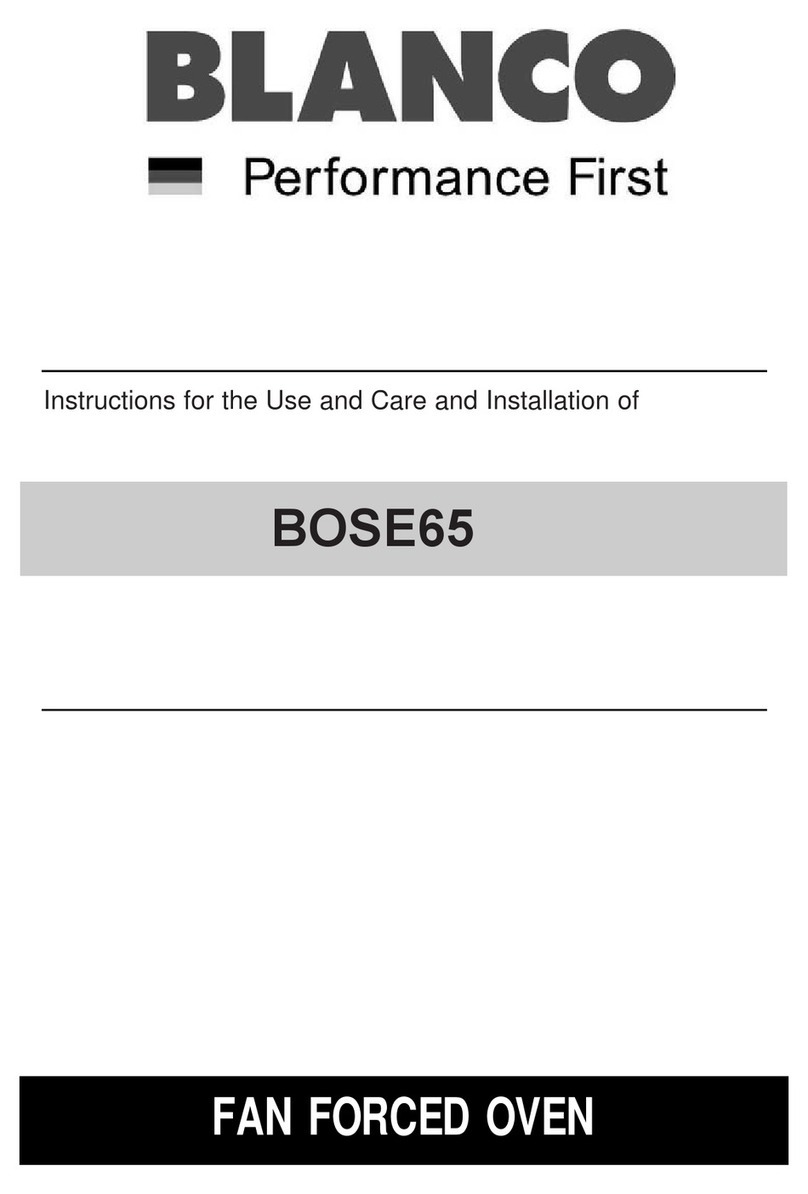
Blanco
Blanco BOSE65 Instructions for the use and care and installation

Miele
Miele MasterChef H 4890 B2 operating instructions

montpellier
montpellier MSE46W Installation and operating instructions
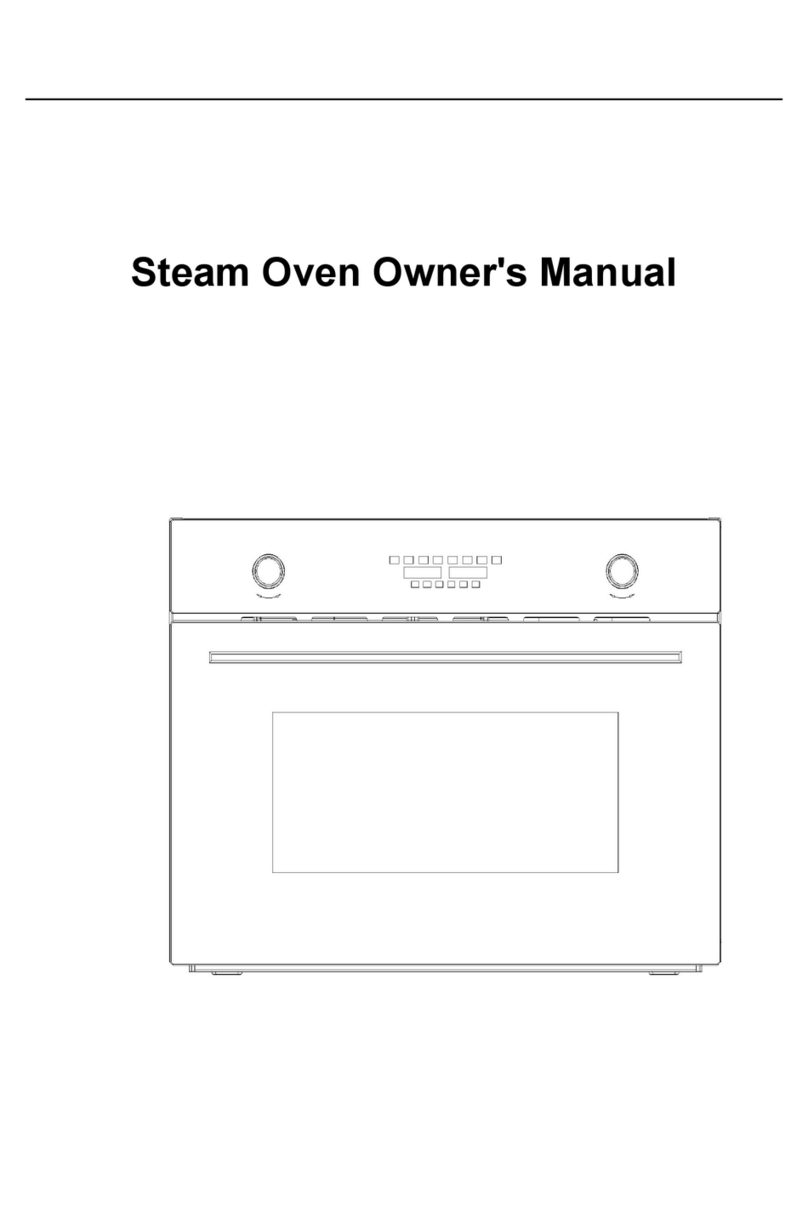
Rubine
Rubine SG1035ES owner's manual

